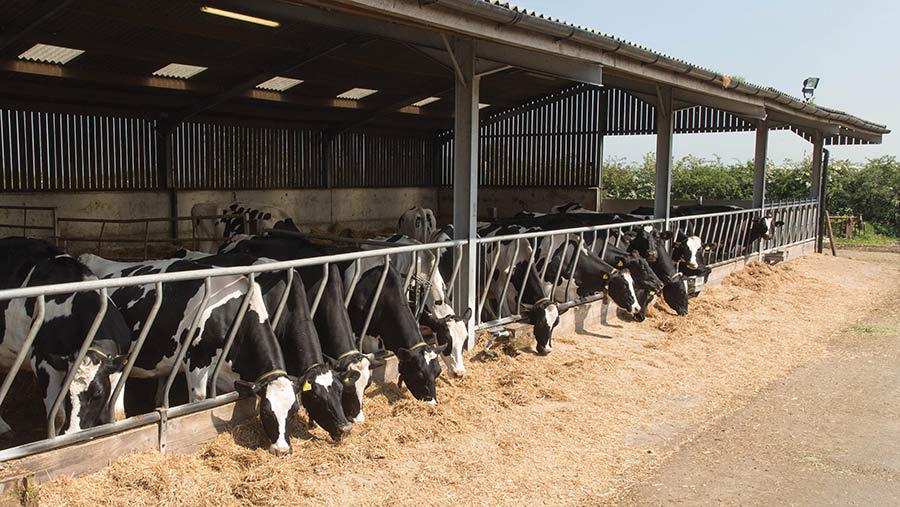Are milk fever and negative energy balance under control?
 © Tim Scrivener
© Tim Scrivener Milk fever and negative energy balance are issues for many dairy herds, despite most dairy farmers recognising the importance of the dry period to cow health and productivity.
According to Prof Alistair Macrae of the Dairy Herd Health and Productivity Service (DHHPS) in Edinburgh, although most herds have a protocol to reduce milk fever, the UK incidence remains at 5%.
See also: Over three-quarters of farmers struggle with milk fever
Furthermore, data from DHHPS show 40-50% of pre-calving second and third calvers having low blood calcium levels.
Alistair questioned whether dairy farmers have really got milk fever under control or are just preventing clinical cases and downer cows.
He said most farms probably follow a partial dietary and cation balance (DCAB) diet, rather than a full one, for simplicity.
This is because there are potential palatability issues from the salts fed in a full DCAB diet.
Also, it requires regular measurements of both urine pH and forage minerals for the DCAB diet to be effective in acidifying the cow’s blood and make the calcium hormones work better.
“But you are working blind if you don’t test your forages. How do you know the diet is working?” he said.
Alistair thought calcium binders (fed in the last three weeks of pregnancy) have been a “positive development” in the past decade.
He said they are thought to work in a similar way to a calcium-restricted diet, and bound cations of calcium, magnesium and phosphate simply pass out in the manure, reducing calcium absorption.
“A number of studies have shown [binders] maintain blood calcium levels and reduce clinical milk fever,” he said, adding that they are particularly useful for herds unable to access straw cost-effectively to dilute the energy in DCAB diets.
Straw chop length
However, he pointed out that recent research on straw processing for dry cow rations shows chop length is crucial for dry matter (DM) intakes.
Cows ate less before calving when long straw (10cm) was fed, while short-chop straw (2.5cm) maintained consistent intakes to calving. “There is less sorting of finer particles, less decline in DM intakes and rumen pH post calving.”
Even accounting for genetics, cows with a lower DM intake pre-calving tend to be the same post-calving, so are the most likely to be sick and off their feed.
Nine years of data (involving 84,369 blood tests from 1,748 dairy herds) show that 30-40% of cows in the UK are struggling in early lactation with excessive negative energy balance, said Alistair.
These cows are at risk of displaced abomasum and ketosis.
They are more likely to die or be culled early, get metritis, have lower milk yields and, on average, have eight days added to their calving to first service interval.
Trough space
“Why do cows struggle with their energy balance? The main risk factors are trough space and not overfeeding metabolisable energy in close-up dry cows,” he said.
He advised optimising trough space, feeding more than once a day and minimising pen moves to less than two for fresh calvers.
Ideally, sufficient feed space and access means 90cm a cow and 80% head yoke capacity. “If you have 10 cow places, have eight cows in it,” he explained.
“Have fresh feed available 24 hours a day. Minimise social stress and movement – especially in the last 10 days of pregnancy. Ensure good cow comfort and space, avoiding hard lying surfaces. And monitor cows for problems.”
Prof Alistair Macrae was speaking at the British Society of Animal Science’s dairy cow nutrition conference (10-11 January, Telford)]
